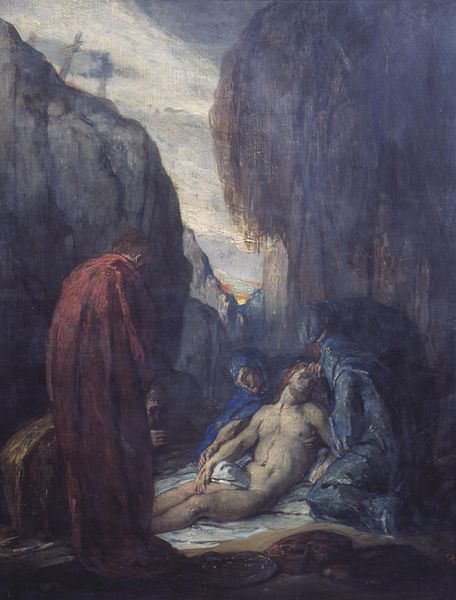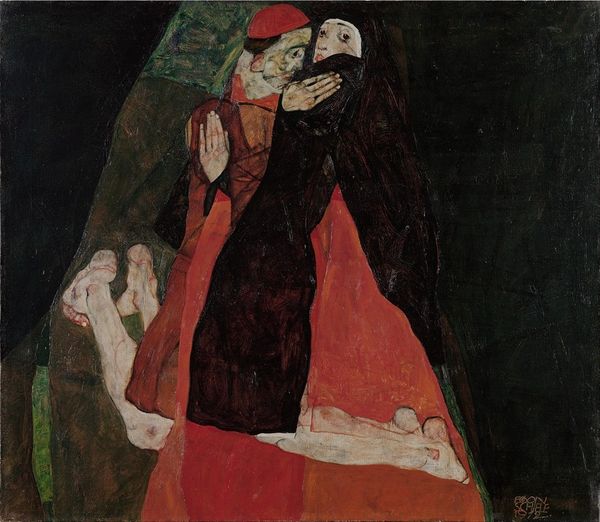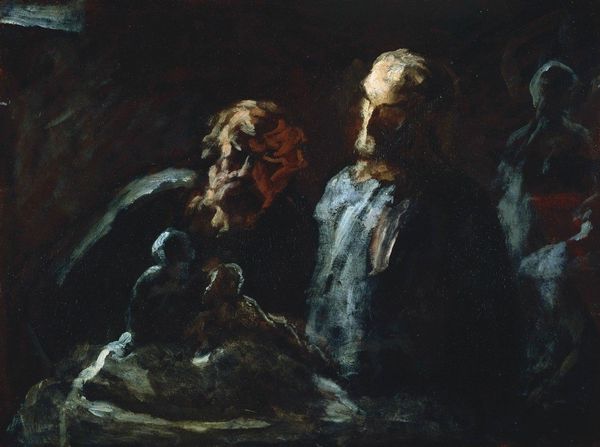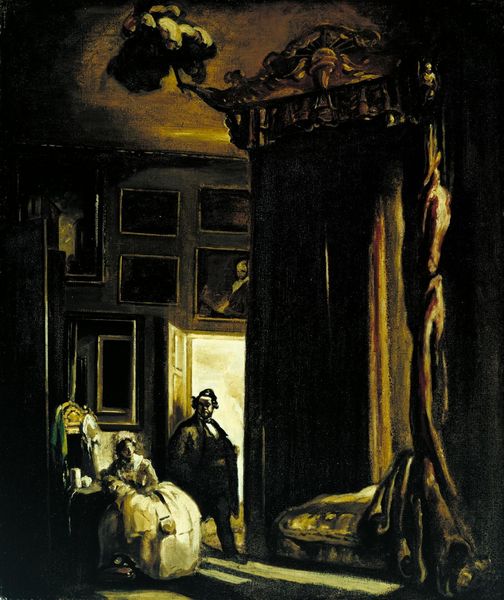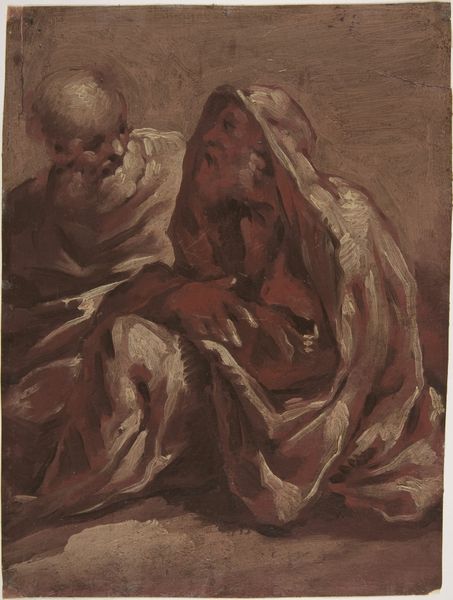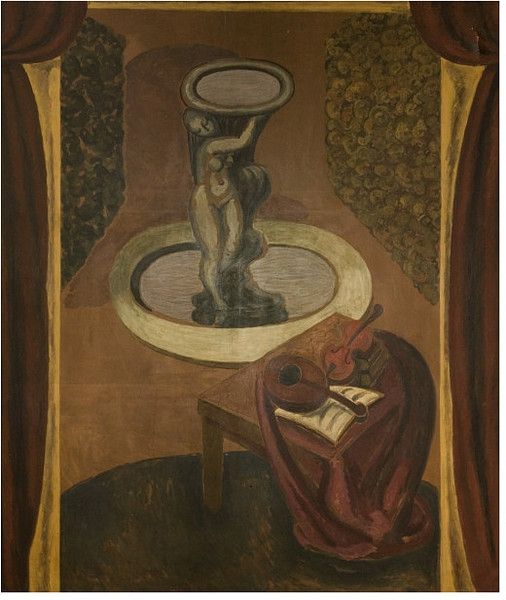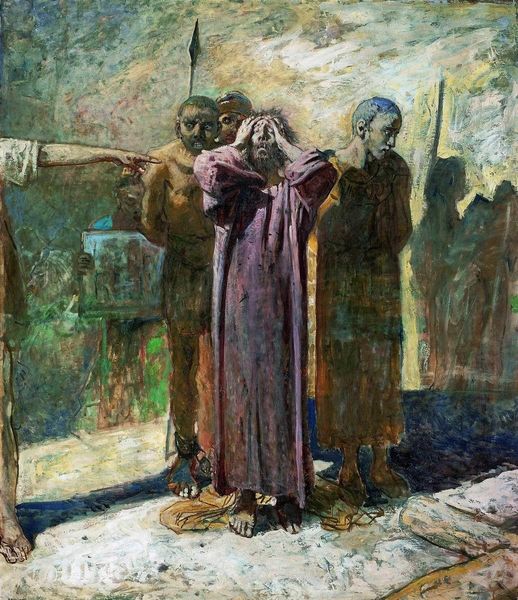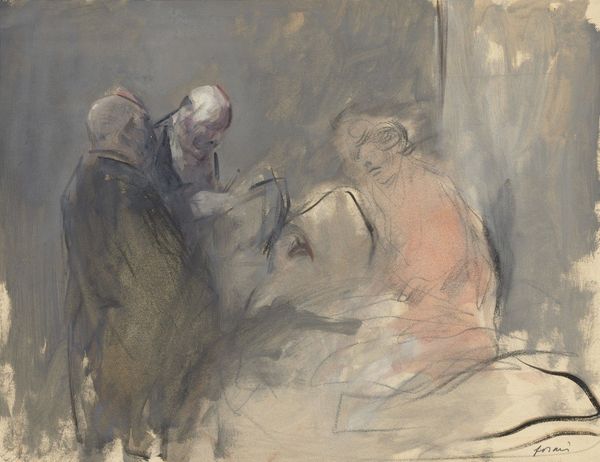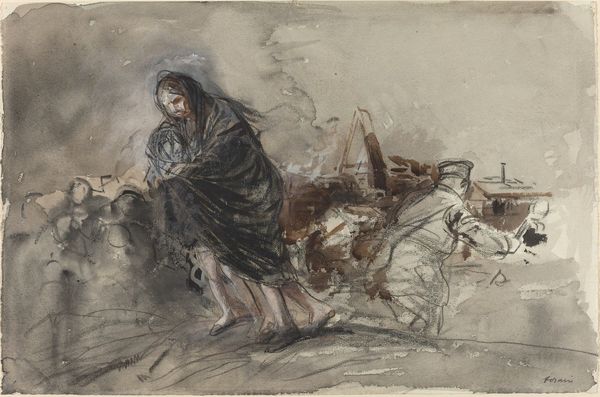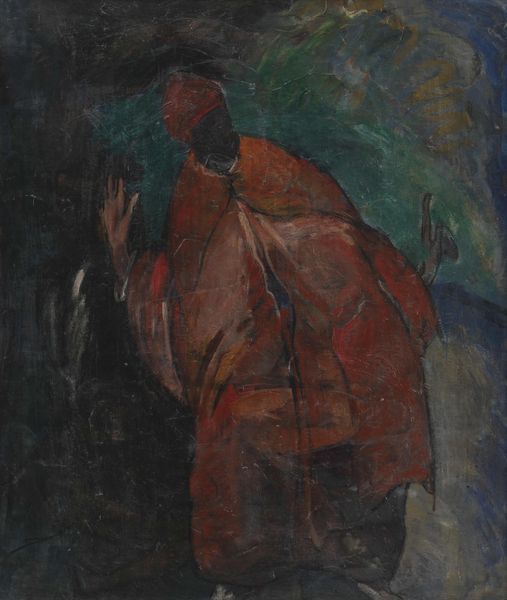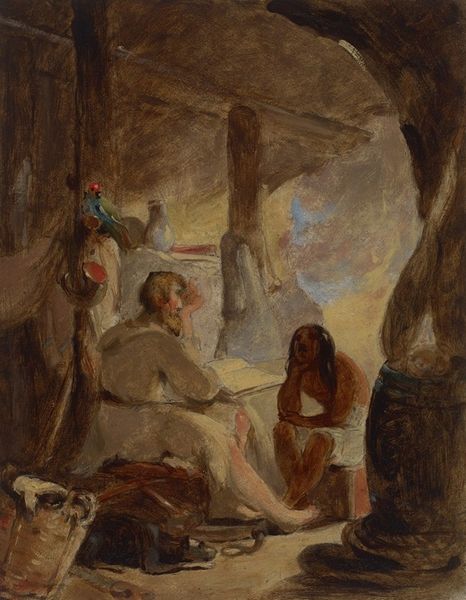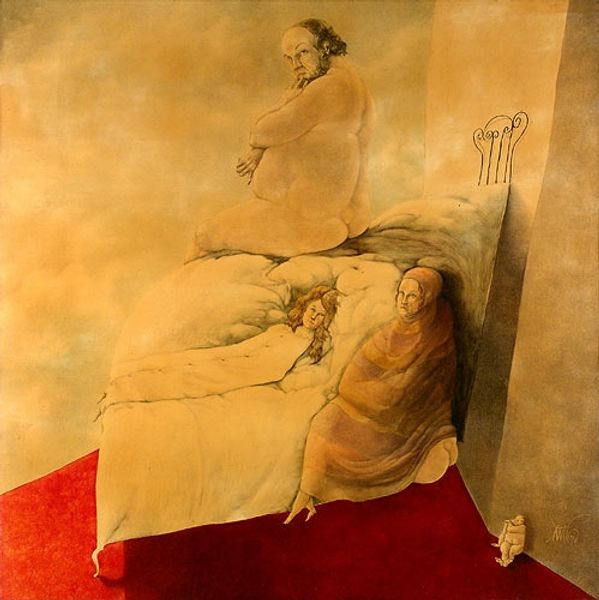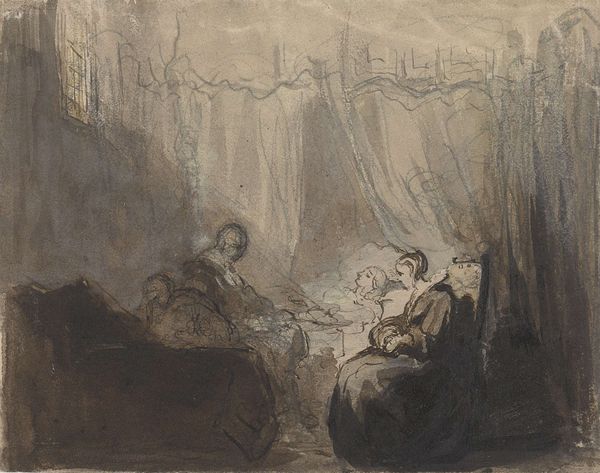
drawing, pen, pastel
#
drawing
#
figurative
#
narrative-art
#
painted
#
oil painting
#
romanticism
#
pen
#
pastel
#
history-painting
Copyright: Public Domain: Artvee
Curator: What a somber scene. This is Edwin Austin Abbey's, Hamlet; \u2018Now might I do it,\u2019 Act III, Scene 3, depicting a pivotal moment from Shakespeare’s Hamlet. Editor: The use of pen and pastel gives the whole scene a muted, dreamlike quality. You can almost feel the weight of Hamlet’s indecision in those heavy lines, sinking against what looks like a table. Curator: Absolutely. Abbey's choice of these readily accessible drawing materials, often associated with preparatory sketches, perhaps underscores the performative nature of Hamlet’s contemplation, constantly rehearsing a script of revenge, or perhaps of mercy. It almost demystifies the "high art" typically employed for history painting, drawing parallels between the tragic play, and, perhaps, broader accessibility in public life at the turn of the century. Editor: And how does this interplay of accessible materials and elevated subject relate to the intended audience and how Shakespeare as popular theater already occupied a broad spectrum? Curator: I believe Abbey is keenly aware of the staging of power itself. Hamlet stands, cloaked in that theatrical robe, not in a castle but a chamber; both potent, yet powerless within the larger societal forces and family structure—unable to perform decisive action. Editor: And Polonius lurking almost entirely hidden speaks volumes, a commentary, no doubt, on the dynamics within Elsinore itself and of surveillance throughout. The almost ephemeral, faded, rendering in pen and pastel highlights the fragility of these relationships—the constant feeling that everyone is watching everyone else, a condition of the Court as social structure. It's quite affecting. Curator: Precisely. By utilizing drawing rather than academic painting, Abbey perhaps democratizes the access to Hamlet’s narrative, questioning who the central storytellers truly are, even suggesting that Shakespeare's theater should be public and that everyone can lay claim to that story. Editor: Thank you for framing Abbey’s Hamlet for us with insight that is both rich and thought provoking. Curator: It has been a pleasure teasing apart the work. I find new things each time.
Comments
No comments
Be the first to comment and join the conversation on the ultimate creative platform.
